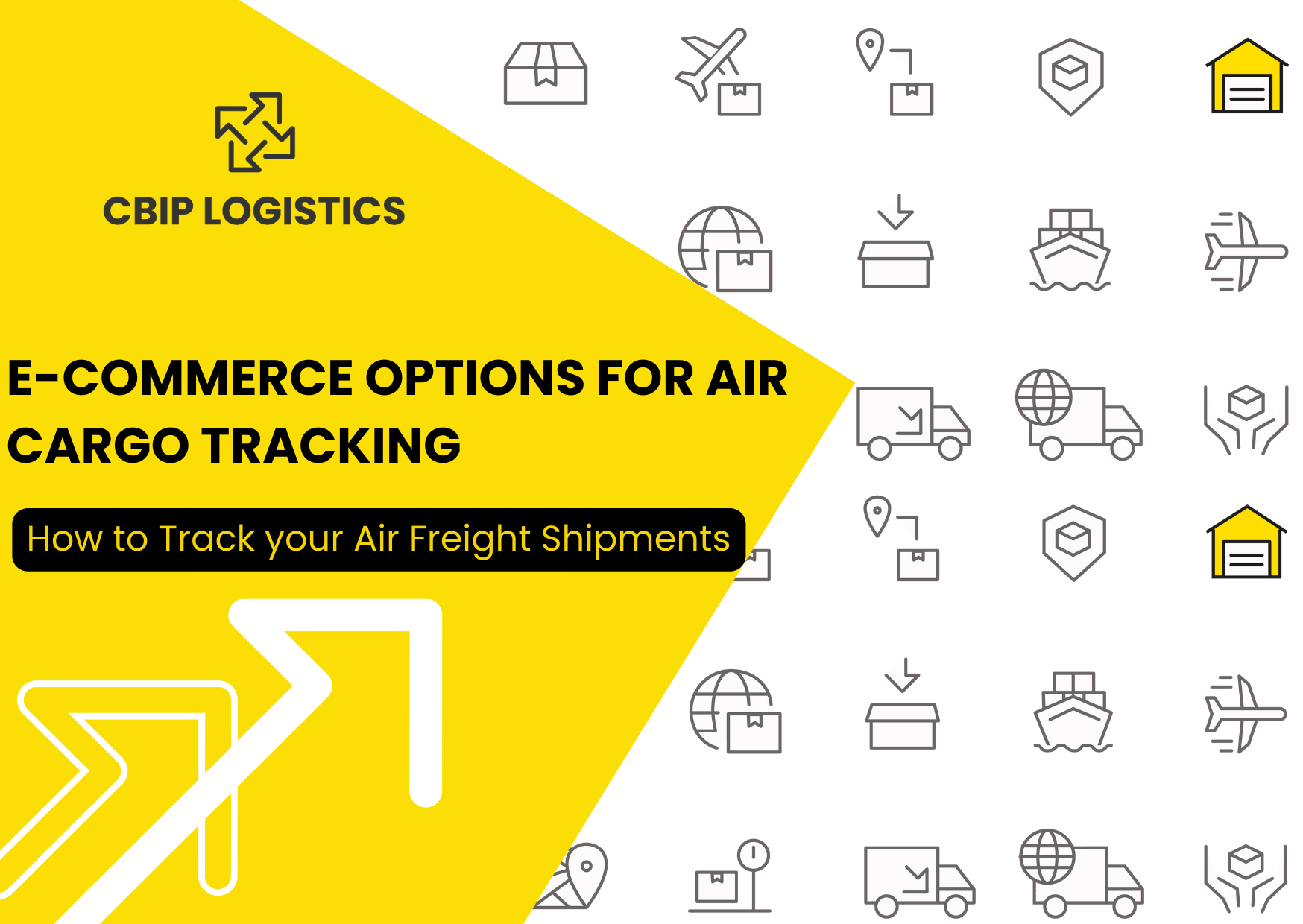E-Commerce and Air Freight: Options For Air Cargo Tracking

In 2023, expectations for fast e-commerce delivery are higher than ever — over 90% of consumers expect to see 2 to 3-day shipping as an option at checkout. Thankfully, air freight remains a reliable option for e-commerce retailers who need to ship products fast.
However, customers don’t just want speed nowadays — they expect predictable delivery times and visibility, too. That means you need a good tracking system.
The typical methods used to track airfreight are:
- Airline based
- GPS based
- Freight forwarder based
Achieving end-to-end air cargo tracking takes some careful planning. Read on to learn the drawbacks and benefits of each tracking method — plus tips on how to execute your best air freight tracking strategy, and insights on the future of air freight.
Read about CBIP's Adaptable 4PL Logistics Services
Options for air cargo tracking
Even if airfreight is the fastest and safest method, tracking can be tricky.
As an e-commerce retailer, you want to establish end-to-end tracking for your cargo as it moves through the airport, flight, customs, and last mile delivery. However, each one of the following methods has limitations when it comes to transparency.
We’ve outlined each method — the good and the bad — and added a few key tips on how to make each method work for you.
Airline-based tracking
With airline-based track and trace, you are simply using the airline’s tracking system as your method for package tracking.
This means that you will need to periodically log on to your portal for that airline to check package status. Typically that can be done using the 11-digit tracking number on your AWB, or airway bill, a document attached to your shipment provided by the airline.
Positive aspects:
- You know the location of your flight in real time.
- The EDI is scanned at the airport; this takes care of shipping documents.
Negatives:
- Limited data: There is no way to know if your items are stuck at customs, damaged, or if they actually are on the flight you are tracking.
- This method provides no first or last-mile visibility.
Tracking tip #1
To further streamline the process, you can also automate the tracking process by integrating the airline tracking system with your internal ERP.
You can do this on your own if you have a capable team. Otherwise, you can hire a partner to complete this integration for you.
GPS-based tracking
You can also use your own GPS tracking system by attaching GPS container trackers to your shipment. As long as the GPS devices have a signal, you will be able to tell exactly where your parcel is.
Positive aspects:
- GPS gives you visibility from the first mile to the last.
Negatives:
- GPS devices may not be approved by the airline you are using.
- There is no way to tell if a single parcel is separated from the order as a whole.
- The device cannot tell you the status of the customs process or the condition of your parcels.
Tracking tip #2
Tracking devices are not limited to GPS. You can add different IoT-enabled devices to boost your tracking capabilities, such as:
- Sensors to provide data on conditions of the shipment, such as temperature, humidity, and any shocks or turbulence the shipment may experience
- RFID tags if a lower power usage, lower cost tracking option is needed
RELATED: Understanding the Future of Air Freight
Freight forwarder-based tracking
Using your freight forwarder’s tracking system in addition to the airline’s tracking system, you can track parcels as they move from different modes of transportation.
The freight forwarder’s GPS tracking system lets you see where your package is from the first to the last mile — provided that they are using GPS tracking.
Positive aspects:
- Using the airline’s tracking system with your freight forwarder’s tracking system gives you fairly consistent info on the status of the flight and the location of your shipment as it moves through other stages and modes of fulfillment.
- Your freight forwarder can assist and provide updates on the customs process.
Negatives:
- At multiple points throughout the shipping process, there is still limited visibility. Knowing the state of your parcels and if they actually boarded the plane remains a challenge.
Tracking tip #3:
There are many different types of freight forwarders out there, all providing different levels of support.
Before partnering with a freight forwarder, make sure you ask about what tools they use to track your freight. If they are using older systems and not integrating technology throughout your logistics, your tracking capabilities will be severely limited.
If you are looking for an end-to-end integrated logistics solution, you might want to consider working with a 4PL, which functions as a freight forwarder and so much more.
The future of air cargo lies in collaboration with logistics providers
Although e-commerce has bolstered the industry, air freight still faces a number of barriers to achieving the level of service today’s customer desires.
The challenges vary from region to region and across industries, but broadly airlines struggle with the following:
- Lagging implementation of digital communications (lack of visibility and transparency)
- Difficulty following industry standards(damaging packages, inefficient, congested facilities)
- Customs compliance requirements causing slowdowns
To combat these issues and catch up with industry expectations, many airlines are looking to overhaul their tracking capabilities and partner with logistics players.
We are already seeing various freight forwarders and local logistics providers teaming up with airlines to provide more streamlined air cargo handling. Many of these companies are integrating their platforms with the airlines — and when each element of logistics is integrated with the air freight carrier/airline, that means easier end-to-end tracking.
While the air freight industry still has some growing to do, these types of partnerships are an exciting step towards more integrated, transparent air freight shipping.
Work with a logistics provider that manages every step of air freight for you
Air freight logistics is made up of different, fragmented parts — making tracking a nightmare. That’s where we come in.
CBIP Logistics functions as your freight forwarder, your air freight consultant, and your all-in-one, global logistics provider.
Being a 4PL (Fourth Party Logistics Provider) means that we do not own airplanes, warehouses, or trucks. Instead, we have a network of those providers who we work with globally. When you work with us, we set up your logistics with those providers that work best for you, and we manage everything for you.
Partnering with CBIP means you won’t have to worry about optimizing your tracking. As your full-service fourth-party logistics partner, we are the ones communicating with airlines to secure you the best tracking on your shipments possible.
Not only that, but we will also integrate air freight tracking with all of the other stages of your logistics — building your ideal end-to-end tracking solution on CBIP’s online platform, and making all of that info available to you in one place.
Want to chat with us about our technique for getting you the best visibility possible for your air cargo shipments? Contact us today to meet with one of our professionals.






